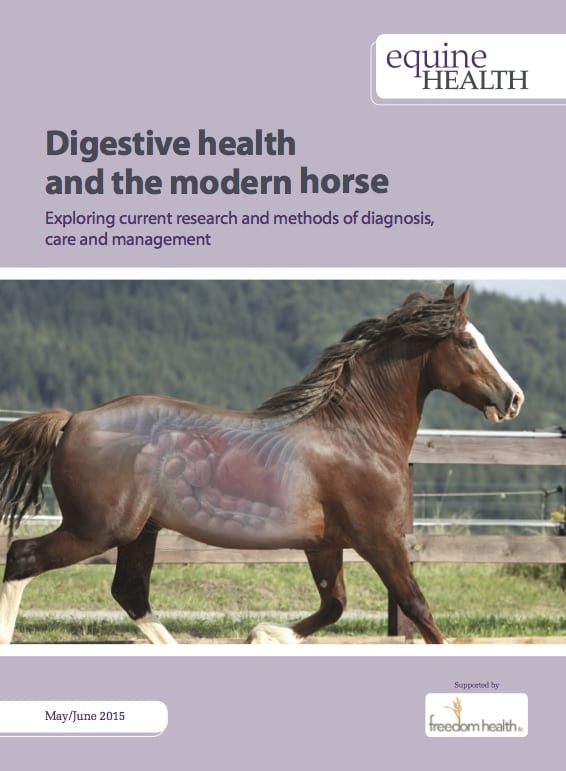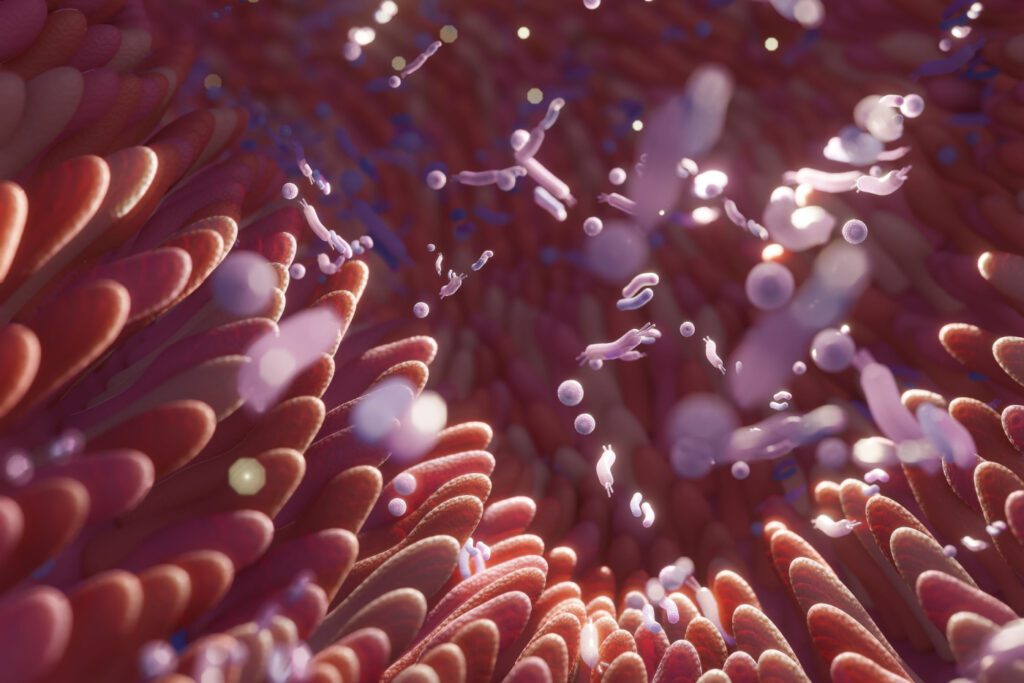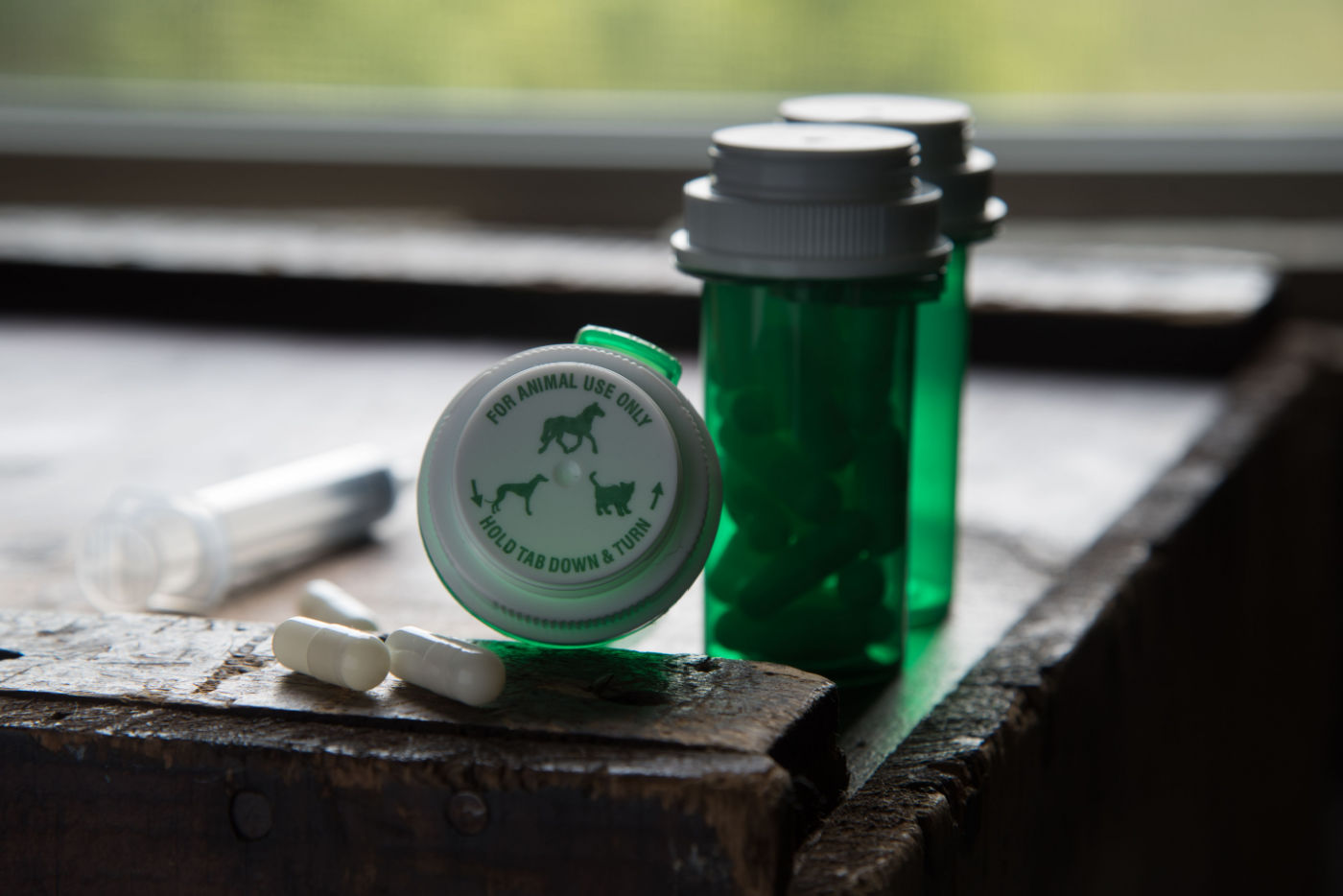 By Dr Helen Warren.
By Dr Helen Warren.
Despite the extensive research in EGUS, very little is known about colonic ulcers and inflammation, their incidence and effective treatment and prevention. Colonic ulceration can lead to similar performance-inhibiting effects as gastric ulcers but are difficult or impossible to diagnose, mainly due to their inaccessible anatomic location.
Diagnostic Options
Gastroscopy is a simple and routine procedure but only reaches the duodenum. Colonoscopy is very difficult and seldom used, and in any case, has very limited diagnostic value as it would be limited to the small colon only. This state of affairs has led to the increased detection of gastric ulcers compared with hindgut issues. The stomach just happens to be the part that we can now ‘see’ easily in a living animal. This point is illustrated by a study carried out by Pellegrini (2005). Subclinical anaemia was being detected in a large number of racehorses, which prompted the first large-scale necropsy study into equine colonic ulcers (Pelligrini, 2005). The digestive tract was examined in 545 horses. Three hundred and sixty five horses were of mixed breed and use, while 180 were classified as performance horses and were accompanied by a standard guaiac-based faecal occult blood test (gFOBT). As expected, the performance horses were more heavily afflicted by gastric ulcers than their more sedentary counterparts (87%, and 55% respectively) but, interestingly, the same trend was found for the incidence of colonic ulcers (63 and44%, respectively). Overall, 97% of the horses necropsied were positive for some form of ulceration and at least 60% displayed colonic pathology.
The correlation of necropsy with the gFOBT demonstrated the potential for a non-invasive test for the detection of non-gastric ulceration/inflammation. Indeed, the specificity for any type of ulceration was 100% (Pellegrini, 2005). Furthermore, the study showed that when there was a positive gFOBT but no gastric ulceration, then colonic ulcers were always present.
The gFOBT detects the haeme portion of the haemoglobin in any occult blood in the faeces. There is no differentiation of where that blood has originated from, therefore, it could be from either gastric or hindgut sources, or both. This test is not a definitive diagnosis per se, but more a valuable aid in diagnosis. Could this be a useful field-based test that, in combination with other diagnostic tools (such as endoscopy), could support the possible diagnosis of colonic ulcers to be detected and then treated? After all, gastric ulcers only became a real issue after the development of a flexible endoscope long enough to reach the stomach (Knottenbelt, submitted). Why should disturbances elsewhere in the GI tract be ignored simply because we have no definitive diagnostic test? Hindgut aberrations are by their nature difficult to diagnose and are likely to be underestimated, so simple, non-invasive tools that allow veterinarians to piece together some of the symptomatic puzzle should be welcomed.
In humans, the gFOBT is used for the detection of many GI disturbances, including colorectal cancers but its use has been superseded in some regions by more sensitive tests, such as the faecal immunochemical test (FIT) (Brenner and Tao, 2013, Carroll et al., 2014), as well as faecal protein markers and faecal DNA/RNA testing (Carroll et al., 2014). Advances have been made in the equine field also.
In an attempt to improve diagnostic value to the standard FOBT, a test that detects both haemoglobin and albumin has been developed (SUCCEED FBT, Freedom Health, Ohio, USA). The test is designed to differentiate between hindgut and foregut aberrations. Essentially a faecal occult blood test, the SUCCEED FBT uses ELISA technology as part of a lateral flow assay to detect two proteins within a specified range; albumin and haemoglobin (both equine specific). It is the differentiation between these two components that can be used to identify where the issue is likely located along the gut. Haemoglobin detected in the faeces may have originated from bleeding anywhere along the GI tract, however, proteolytic enzymes released into the duodenum breakdown any albumin present. Therefore, any albumin present in the faeces must have originated from tissue damage within the LI. This differentiation can be used, not only to determine that an issue exists but also to pinpoint roughly where along the GI tract the issue lies. Positive tests for both haemoglobin and albumin indicate a definite hindgut but also possible foregut issue, whereas a positive haemoglobin but negative albumin result indicates foregut aberrations and would indicate other diagnostic tools, such as endoscopy should be employed. Conversely, positives for albumin but not for haemoglobin probably suggest hindgut issues only.
Prevention is Always Better Than Cure
The area of animal welfare provides a significant contribution to animal research. Much of this research focuses on behaviour and environmental conditions. However, thought is now also shifting from the treatment to the prevention of disease as a key welfare goal. Historically, the role of the veterinarian has been to simply treat symptoms and disorders with which they are faced but the belief is increasingly that the focus should be on promoting management practices to reduce the incidence of disease. This is particularly evident and effective in the field of nutrition where a greater understanding by horse owners on the critical importance of dietary fibre has been achieved. Despite this, there also seems to be an acceptance of many of the negative aspects of modern horse management without investigation into their cause(s) or mitigation strategies. A case in point would be the gastric ulcer syndrome. The ability to ‘see’ gastric ulcers, grade their severity then prescribe a seemingly effective drug is obviously a good thing but do we not owe it to the horse to investigate definitive risk factors, causes and aetiology?
A study carried out by Kerbyson et al. (2014) investigated the effect of a nutritional supplement (SUCCEED) on the development and treatment of squamous gastric ulceration in racing Thoroughbreds. Horses recruited onto the trial had been diagnosed with gastric ulcers (via gastroscopy) but with no clinical signs or history of treatment. Allocated to one of two treatments (omeprazole or SUCCEED, both administered according to manufacturer’s recommendations) horses were scoped again on days 30, 60 and 90 of the trial. By the end of the trial there was no significant difference between the omeprazole and SUCCEED treatments. The fact that a nutritional supplement (a combination of polar lipids and β-glucans) had the same effect as a commonly prescribed drug does seem to pose the question as to whether we truly understand the aetiology of gastric ulcers. Was the omeprazole truly effective or was the nutritional supplement providing prophylaxis in some way? What are the implications of long-term use of proton-pump inhibitors? Acid production is a natural part of the digestive process and restricting it for long periods has its own potential negative consequences that so far have not been seriously addressed. More research is needed to answer these questions. What we do know however, is that better management, detection and prevention strategies are required in the war against a wider range of GI tract aberrations.
Drugs undoubtedly work rapidly and results are often seen almost immediately but dietary adjustment takes longer since the GI tract and its associated elements require a longer-term approach to adapt to the available foods. If horses are to be kept and used for performance and enjoyment, should we not look at blueprints for best manage- ment practices rather than defaulting to drugs to treat the resultant disturbances? There are, of course practical and economical restrictions in many instances but reducing the over-reliance on prescribed drugs has to be beneficial for all involved.
| This article is was included in a full piece on “Digestive health and the modern horse“ inserted as a supplement in the May/June 2015 issue of Equine Health. Click to view and download a PDF of the complete supplement: |
 |
References
Bell RJ, Mogg TD, Kingston JK (2007) ) Equine gastric ulcer syndrome in adult horses: a review. New Zealand Veterinary Journal 55(1): 1-12
Carroll MRR, Seaman HE, Halloran SP (2014) Tests and investigations for colorectal cancer screening. Clinical Biochemistry 47: 921–939
de Fombelle A, et al (2003). Animal Science 44: 293-304
Engelking LR (1993) Equine fasting hyperbilirubinaemia. Advances in Veterinary Science and Complementary Medicine 37: 115-125
Kerbyson N, Parkin TDH, Knottenbelt DC (2014) The effect of a dietary supplement (SucceedTM) on gastric ulcer severity. Proceedings of the 11th International Equine Colic Research Symposium of the British Equine Veterinary Association, 7th – 10th July, UK
Pellegrini FL (2005) Results of a large-scale necroscopic study of equine colonic ulcers. Journal of Equine Veterinary Science 25(3): 113-117
Potter GD, et al (1992) Digestion of starch in the small or large intestine of the equine. In: 1. European Conference of Horse Nutrition, Pferdeheilkunde Supplement, 107–111
Santos AS, et al (2011) Understanding the equine caecum-colon ecosystem: current knowledge and future perspectives. Animal 5(1): 48-56
Vatistas NJ, et al (1999) Cross-sectional study of gastric ulcers of the squamous mucosa in Thoroughbred racehorses. EVJ Suppl. 29: 34-39
Vervuert I, et al (2009) Effect of feeding increasing quantities of starch on glycaemic and insulinaemic responses in healthy horses. The Veterinary Journal 182: 67–72
Vermorel M, Martin-Rosset W (1997) Concepts, scientific bases, structure and validation of the French horse net energy system (UFC). Livestock Production Science 47: 261–275





